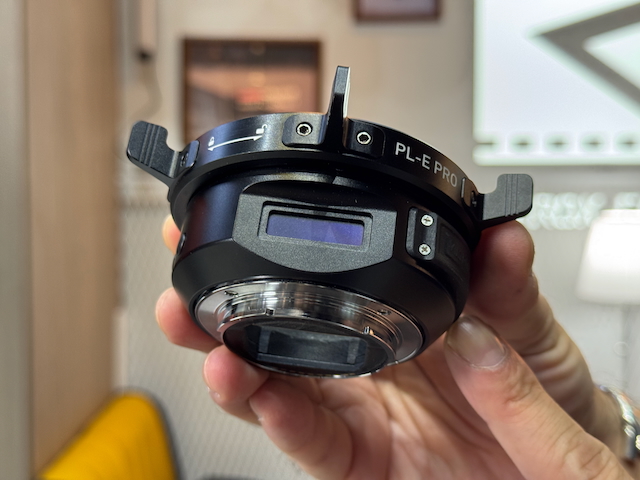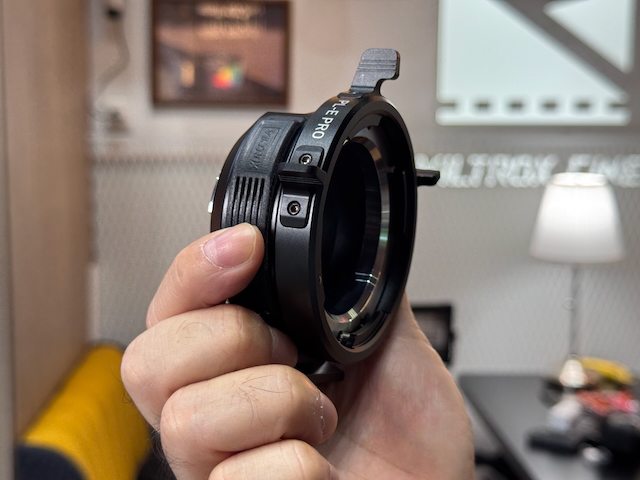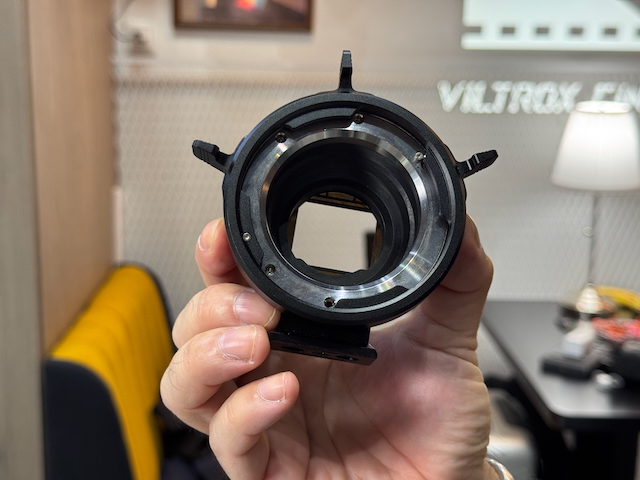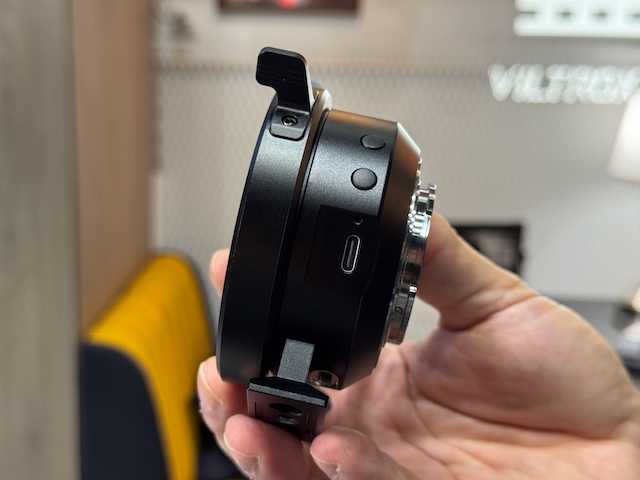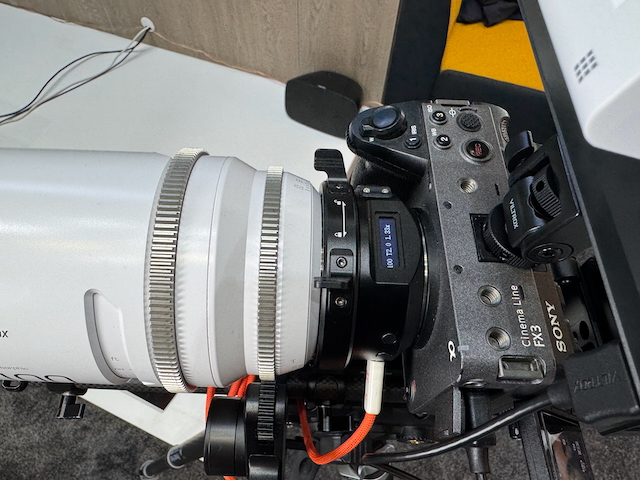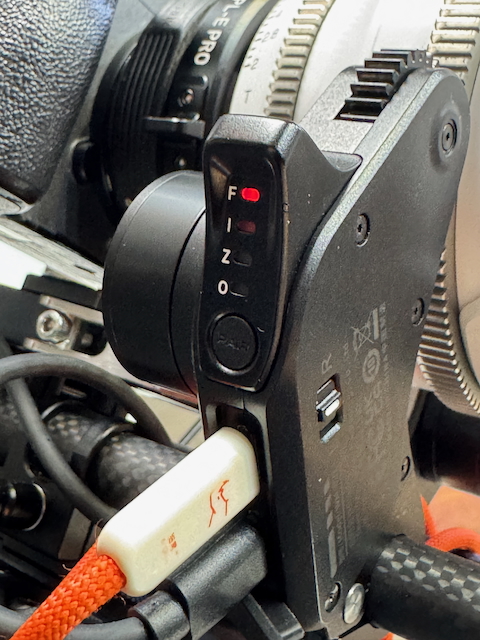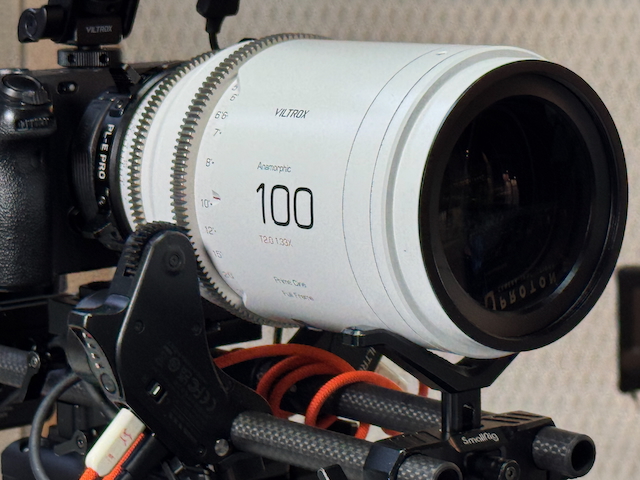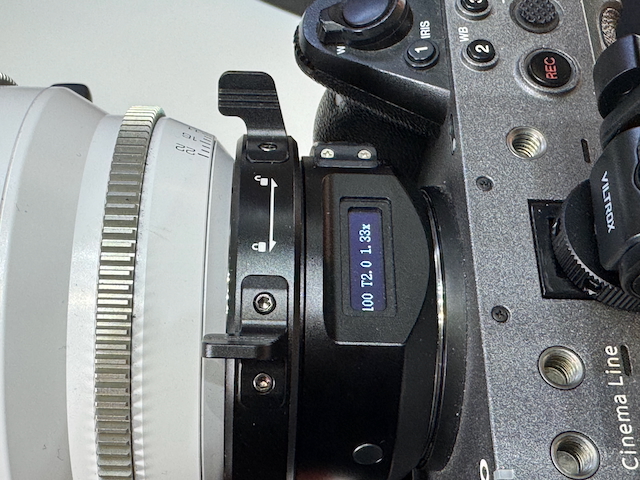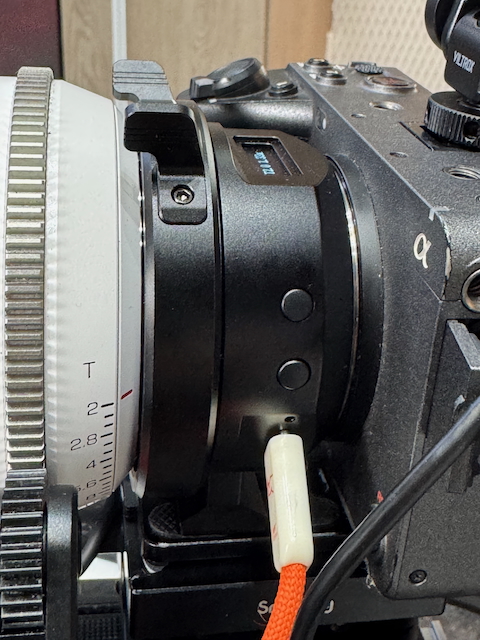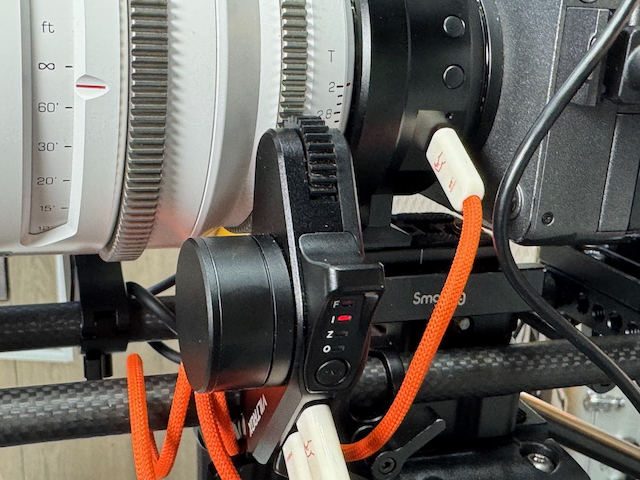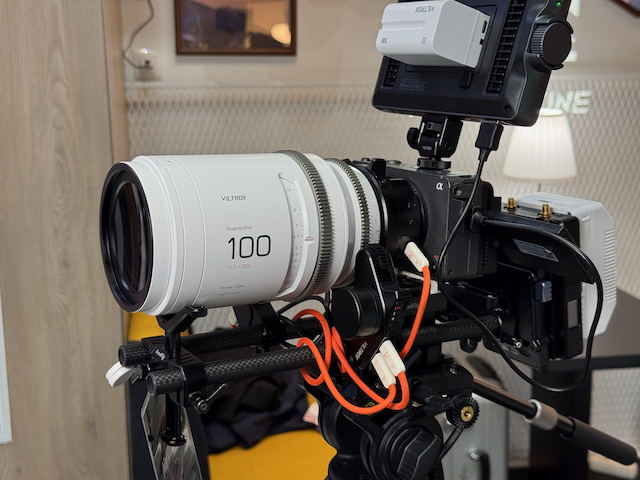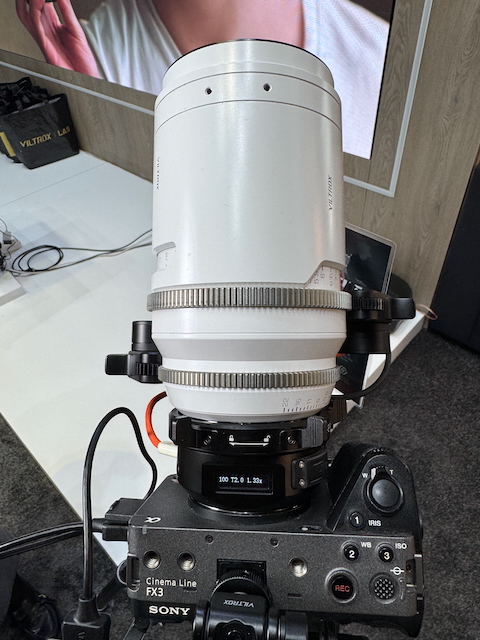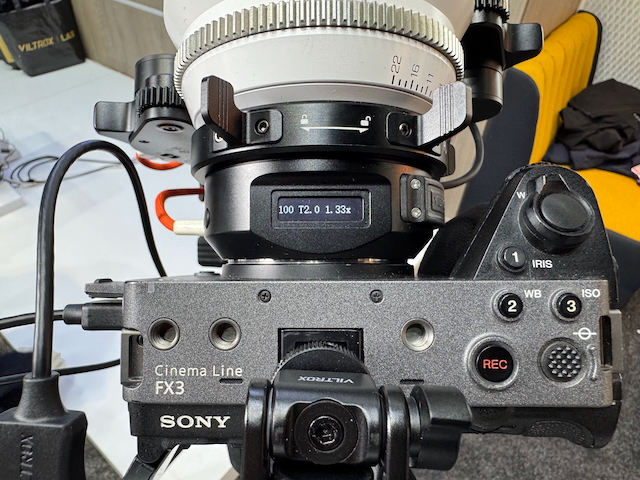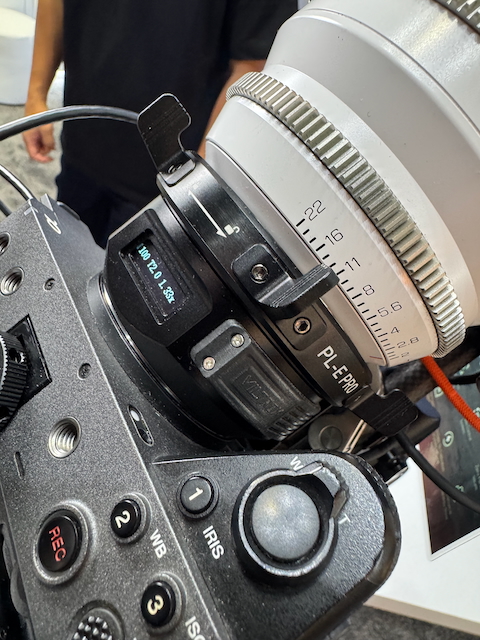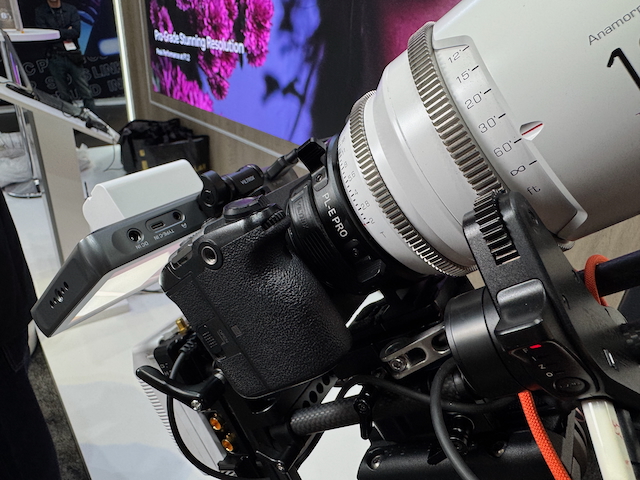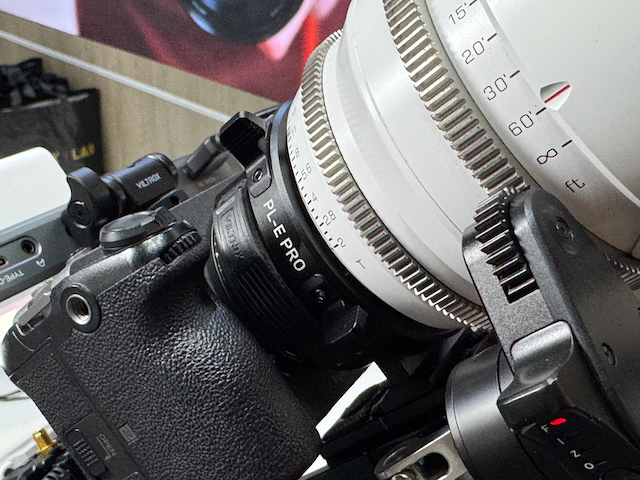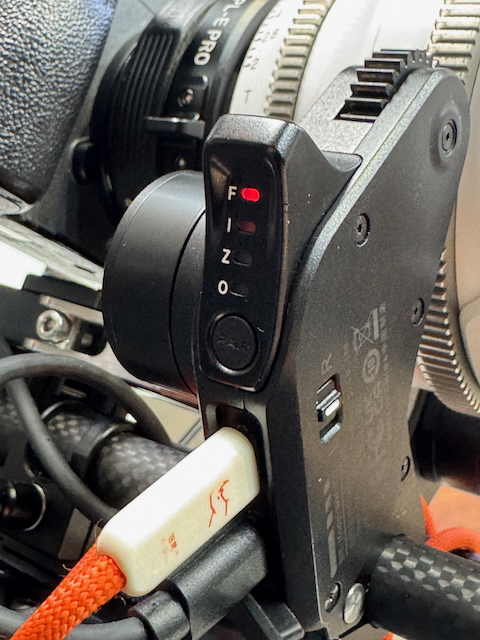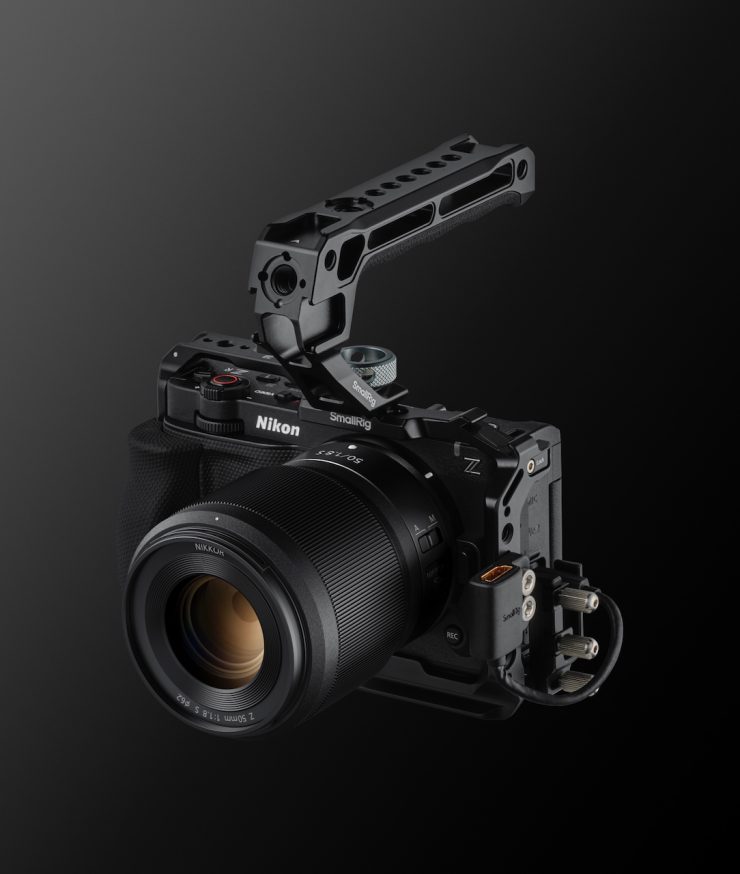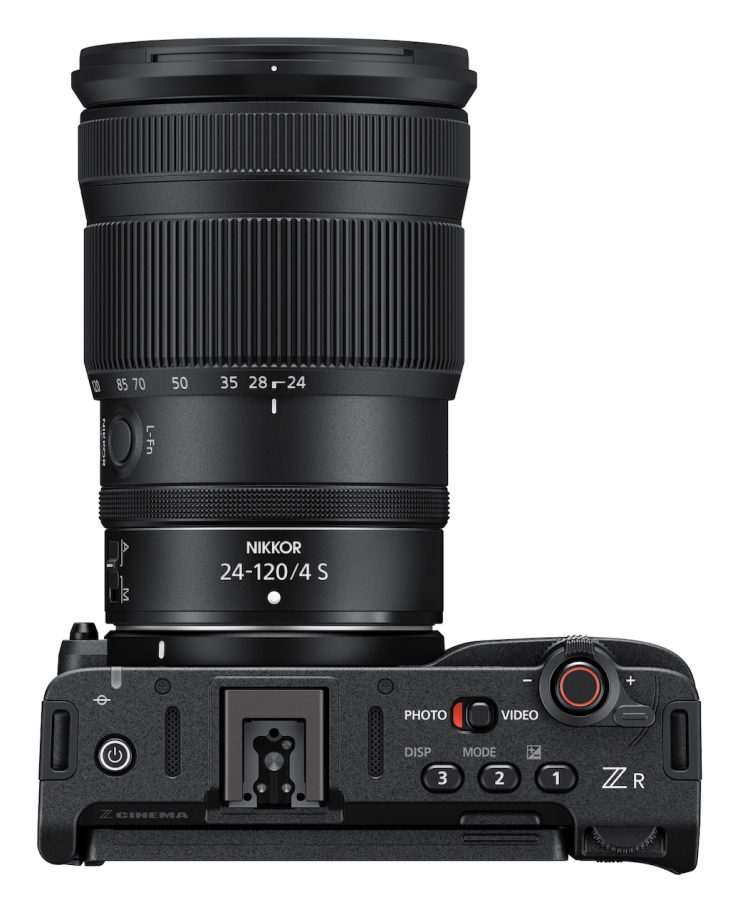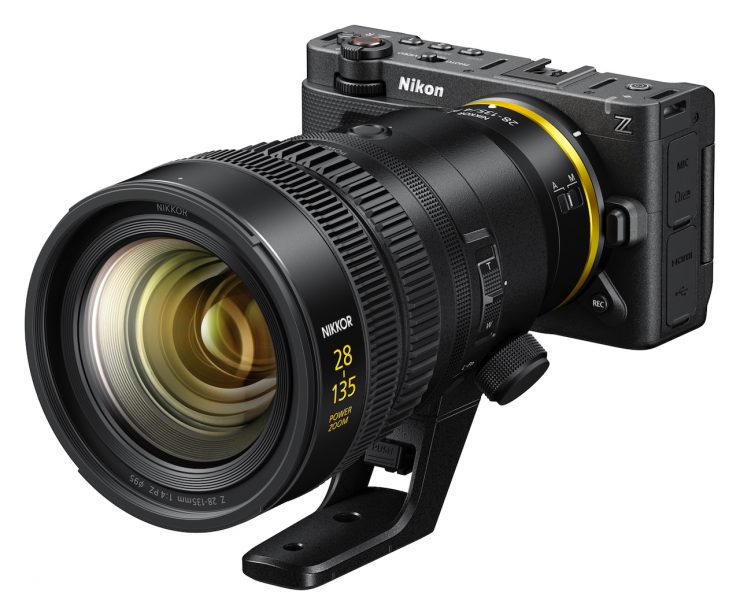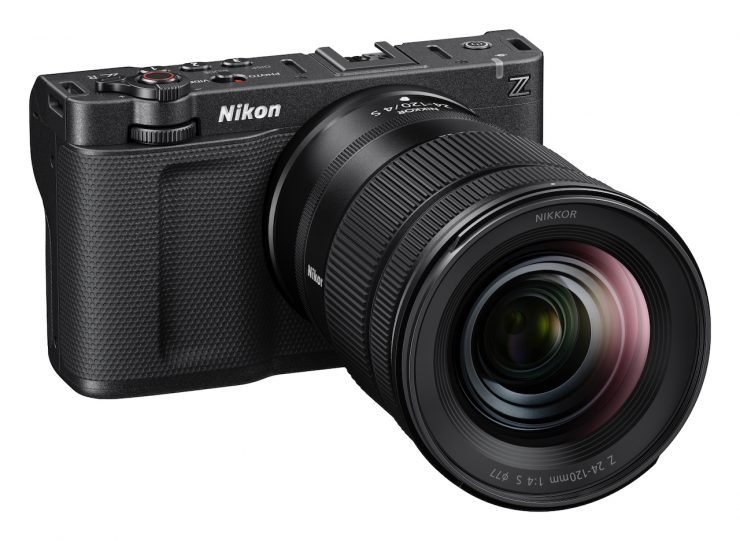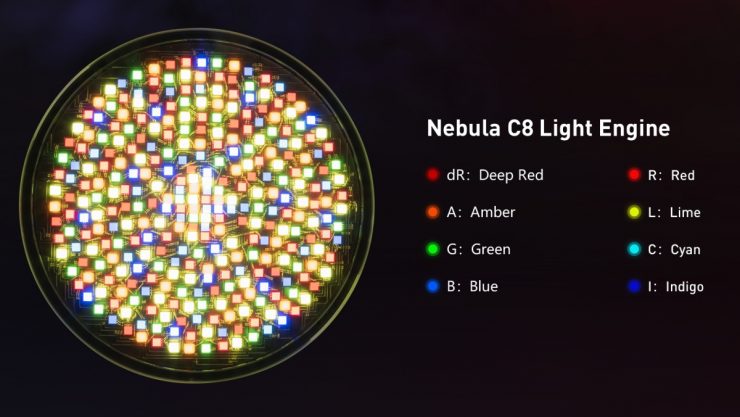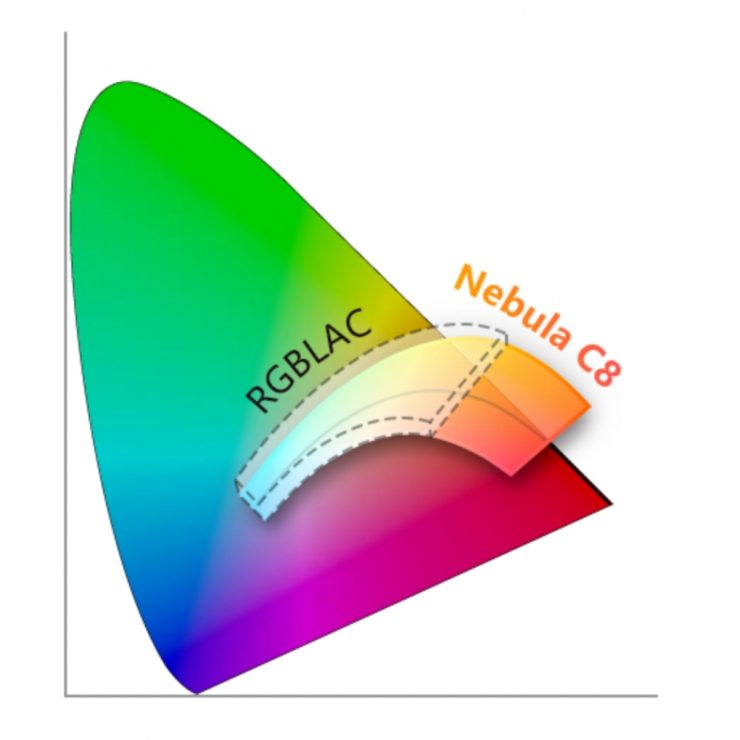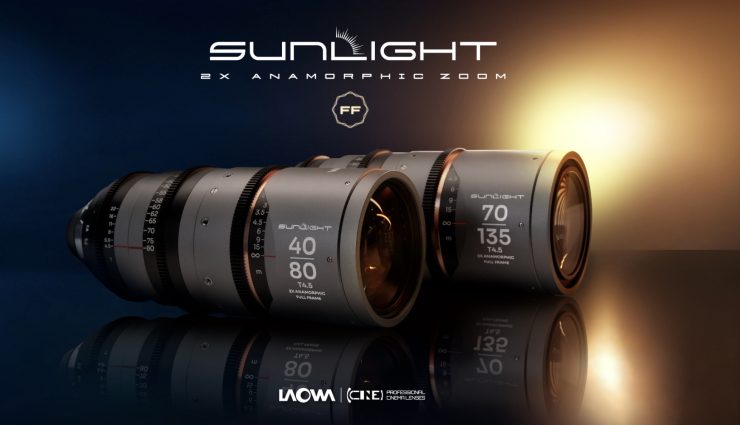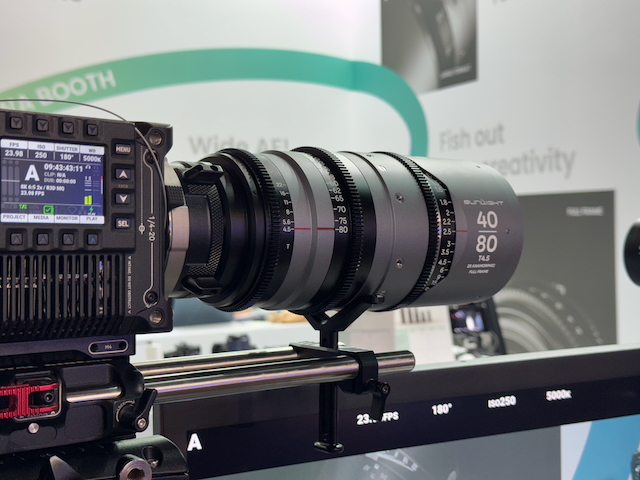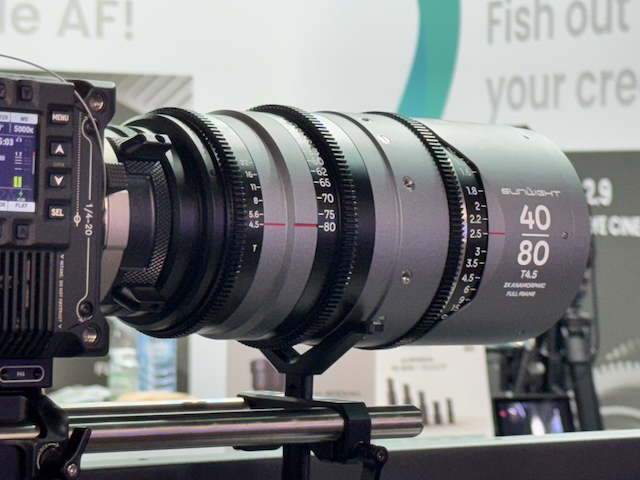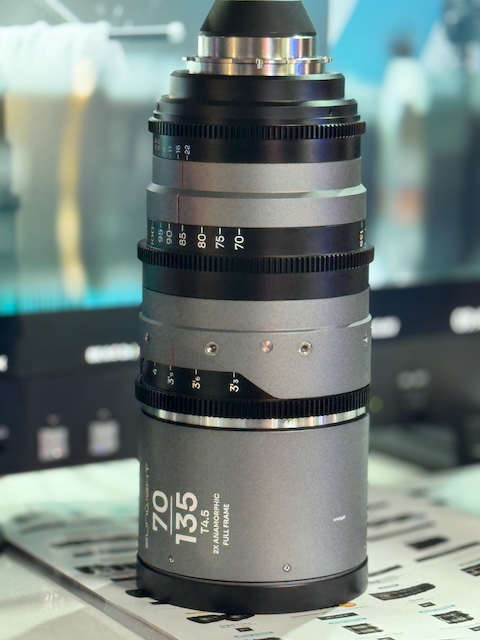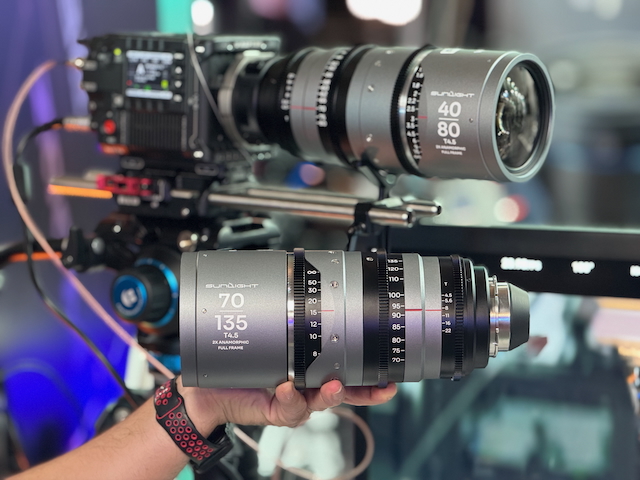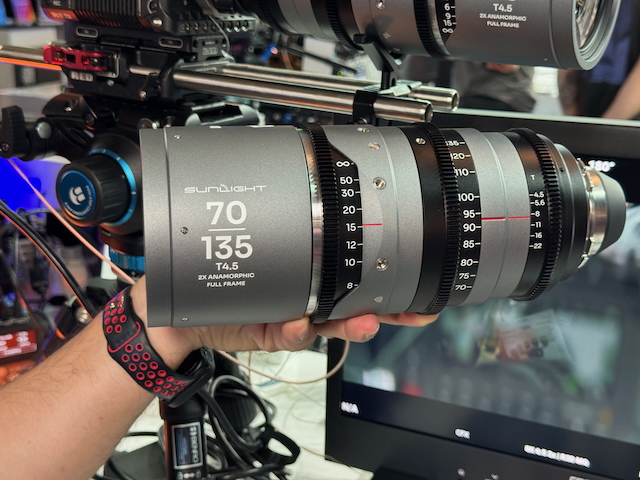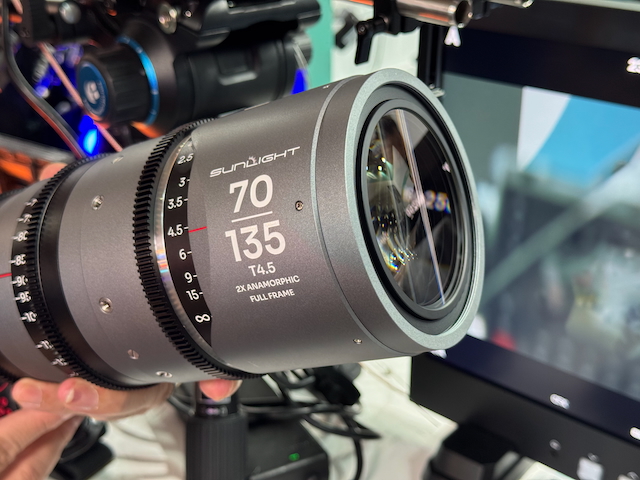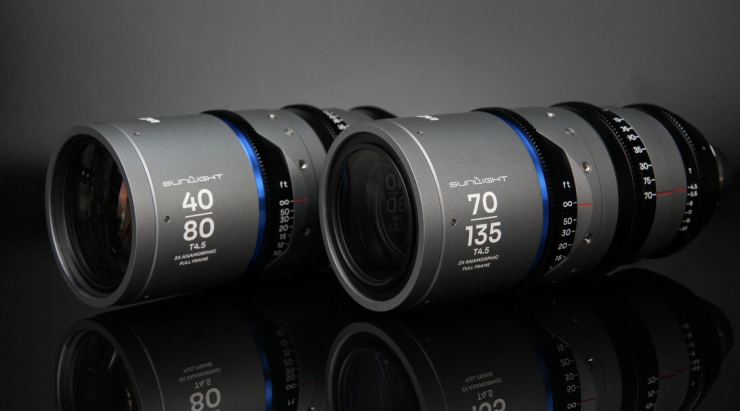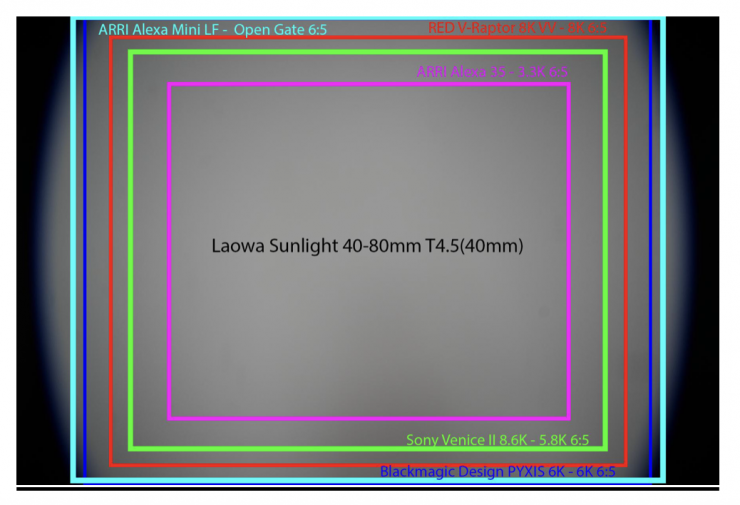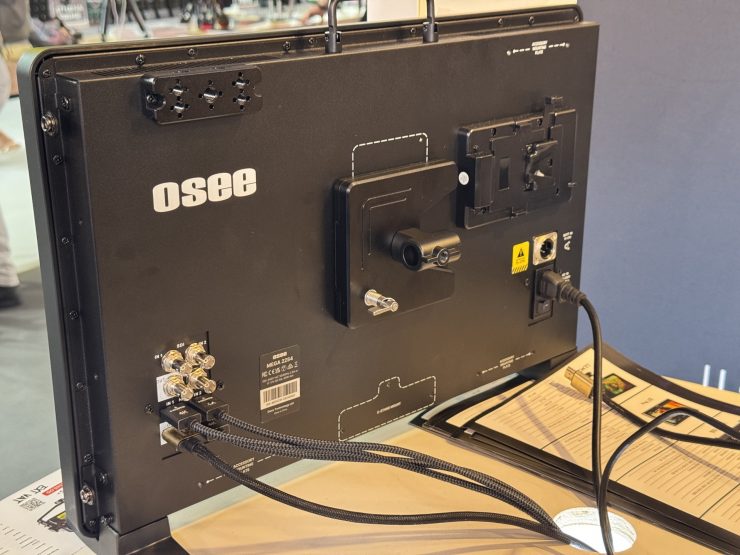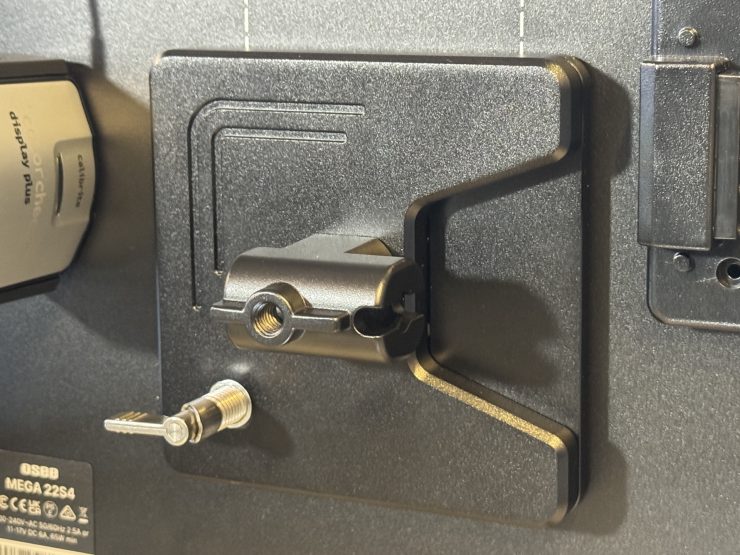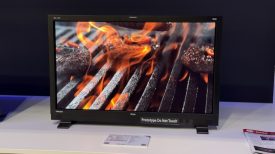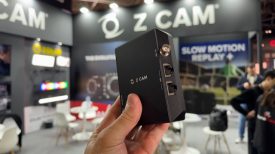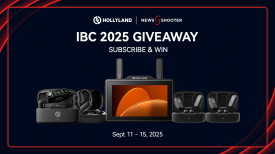
IBC 2025 in Amsterdam was a very busy show, and Newsshooter has already posted more than 60 articles. From all of the products we covered, we have selected five best of show awards. There was no criteria for the awards, and companies didn’t have to enter or pay any fees. Anyone showing a product at IBC was eligible to win an award.
Here are the five products we chose:
- VILTROX NEXUS
- NIKON ZR
- NANLUX EVOKE 600C & 150C
- LAOWA SUNLIGHT 2x FF ANAMORPHIC ZOOMS
- OSEE MEGA 22S4 21.5″ IPS 10 BIT MONITOR
VILTROX NEXUS
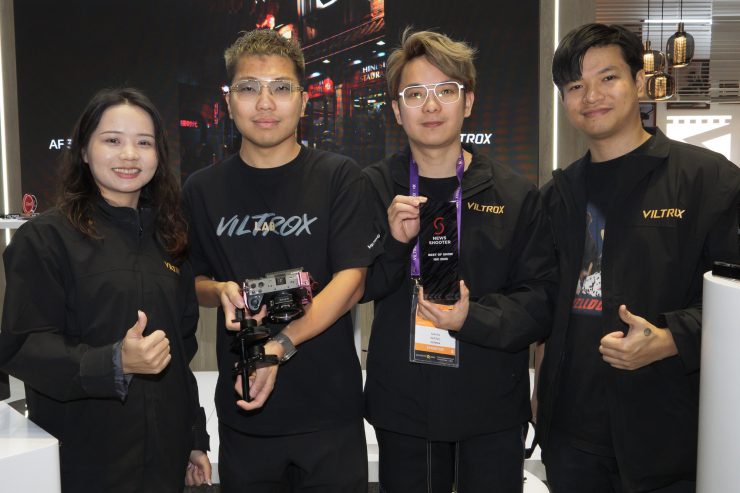
The Viltrox NEXUS is a PL to Sony E-mount adapter that will allow manual PL cine lenses to behave as AF lenses.
Through the lens adapter mount, Viltrox motors will be able to receive autofocus information directly from the camera sensor.
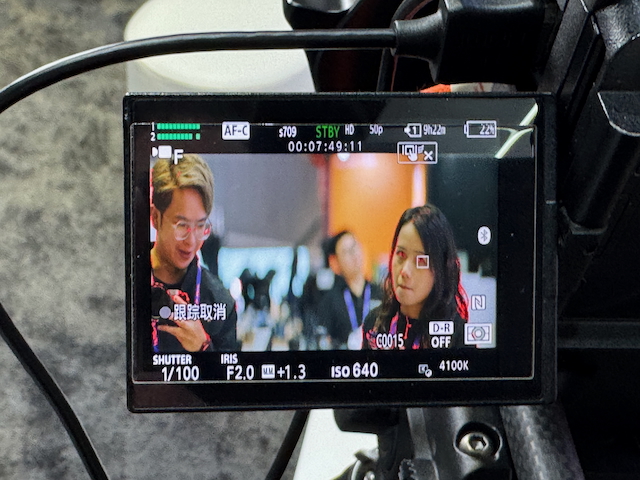
Essentially, when you touch the back LCD screen on the camera, the AF system sends the same information to the lens motors as it would to a native E-mount AF lens. This allows for full AF tracking, eye detection, etc. This is a very clever solution that is way easier to use and set up than something like the DJI Focus Pro. I tried it out on the show floor, and it worked very well, even on a 1.33x anamorphic lens.
NEXUS uses a special PL mount that talks to the camera and is then able to send the AF information through standard USB-C cables to up to 3 motors at the same time. You can use the camera’s iris control, and the motor will adjust the iris on the lens just as if you were using a native AF lens. With a camera like the FX3 that has a zoom control lever, if you were using the system with a cinema zoom, you can zoom the lens just like you would when using a power zoom.
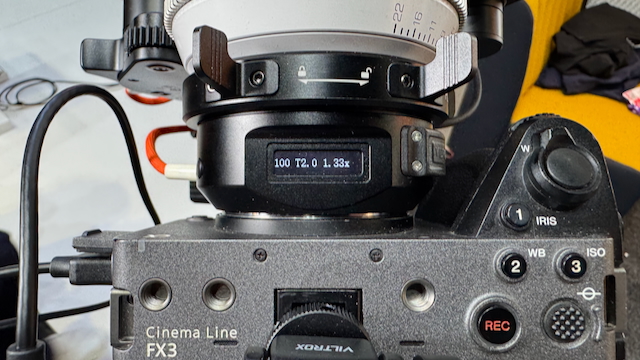
The Viltrox NEXUS has a digital display on the top that tells you what lens you are currently using, and you will be able to use a wireless Bluetooth app to store and save lenses that can be recalled. This saves on having to set up lenses so they are eady to go straight away.
As the system relies on the cameras’ AF, it works in a completely different way to say LiDAR.
Viltrox told me that they hope to have NEXUS shipping by the ned of the year. While there is no current indication about pricing, they did tell me that it will be very affordable.
The current solution is only PL to Sony E mount, but Viltrox did tell me that they are looking into doing other mounts.
NIKON ZR
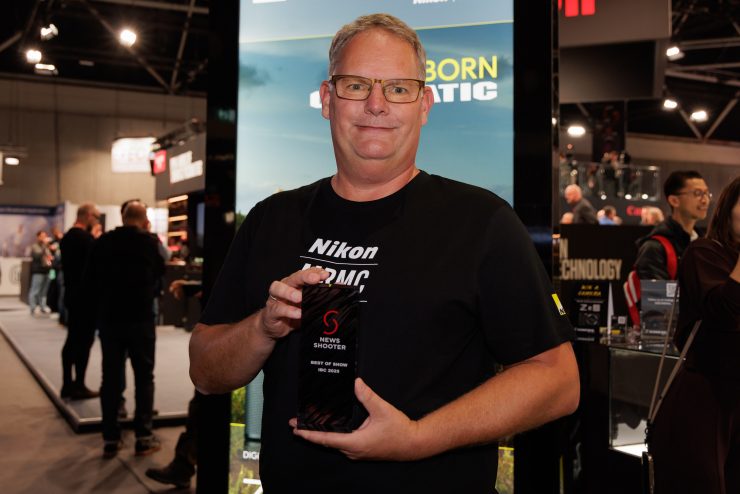
The new Nikon ZR can record up to 6K/60p (59.94p) and incorporates the new R3D NE RAW video file format with RED color science based on RED’s popular R3D RAW codec. It is also stated to have 15+ stops of dynamic range.
Just like the competing Canon EOS C50 and Sony FX3A, the NIKON ZR doesn’t have built-in ND filters, SDI, or an EVF.
Key features
- Fusion of RED + Nikon Cinema Technology
- 6K Full-Frame Z-Mount Cinema Camera
- REDCODE RAW R3D + N-RAW Recording
- ProRes RAW/HQ, H.265/H.264 Codecs
- 32-Bit Float Audio, Dual-Base ISO
- Bright, Folding 4″ DCI-P3 Display
- Built-In 3D LUTs, Digital Accessory Shoe
- Dual Built-In Microphones
- 15+ Stops Advertised Dynamic Range
- Frame.io Cloud Integration
The ZR is being touted as an ultra-lightweight, full-frame camera that blends the best technologies and philosophies that NIKON and RED both offer. NIKON states that this is aimed as an entry-level digital cinema camera designed for emerging cinematographers and high-end content producers.
The new Nikon ZR Cinema Camera will be available in late October 2025 for $2,199.95 USD for the body only. This makes it very competitively priced.
NANLUX EVOKE 600C & 150C

The NANLUX Evoke 600C is a 600W full-color light featuring a new 8-color Nebula C8 light engine, as well as its smaller counterpart, the 150C, which shares the same Nebula C8 light engine.
According to NANLUX, the Nebula C8 Light Engine is capable of delivering
exceptional light quality in both white and colored light. Its eight colors (Deep Red, Red, Amber, Lime, Green, Cyan, Blue, Indigo), combined with an advanced mixing algorithm, enable an ultra-wide CCT range from 1,000K to 20,000K, which, to my knowledge, is the widest range currently available. It also features a ±200 Green/Magenta adjustment, broader color gamut coverage, and higher saturation.
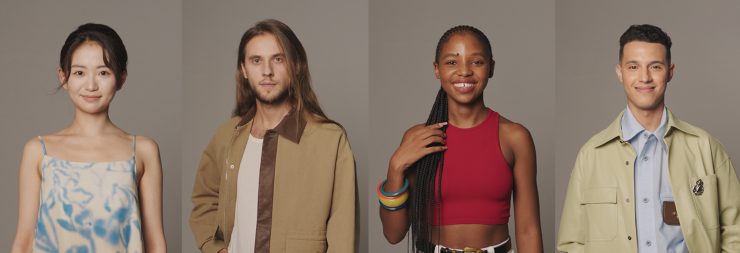
NANLUX states that when compared to conventional color engines, the Nebula C8 achieves superior fidelity and skin tone accuracy in white light.
Looking back at light source technology, NANLUX and the industry have progressed in color fixtures from 4-color and 5-color solutions (RGBW/RGBWW) to 6-color systems (RGBLAC), and in bi-color fixtures from traditional Warm White & Cool White solutions to designs incorporating red and green LEDs.
With these goals in mind, NANLUX redefined its technological direction and embarked on a path of research and development that ultimately created the Nebula Light Engine.
With the Nebula Light Engine, NANLUX aims to provide users with a more precise, efficient, and safer creative experience.
The Nebula C8 is the first color light engine in the Nebula light engine series. The Nebula C8 Full Color Light Engine is the industry’s first eight-color light engine, achieving full coverage of the entire visible spectrum. With NANLUX’s proprietary color-mixing algorithm, its eight colors are precisely balanced and seamlessly blended, delivering a wider CCT range and a broader color gamut.
The Nebula C8 is an evolution of NANLUX’s RGBLAC six-color light engine. The Nebula C8 builds on this with the addition of two more colors – deep red and indigo. This fills the gaps found in traditional color light engines, producing a more complete spectrum and offering a wider range of color temperatures and richer colors.
With the addition of the color deep red, the Nebula C8 Color Light Engine achieves the industry’s widest CCT range of 1,000K-20,000K, fully covering all color temperature needs in production.
The low end of Nebula C8’s CCT range has gone to the unprecedented 1000K, far below the color temperature of sunrise or candlelight, delivering exceptional capability for shaping ultra-warm tones.
In addition to the ultra-wide CCT range, the Nebula C8 also supports +/-200 green/magenta adjustment across its entire color temperature range, allowing users to fine-tune the tint at any color temperature with precision.
The natural rendering of human skin tones depends on the fixture’s full coverage of the red spectral range. However, in most color light engines available in the industry, the red spectrum leans toward orange, making skin tones appear pale and less natural both to the eye and on camera.
The Nebula C8 extends its original 645 nm red color with an added 665 nm deep-red color. This extends coverage across the red spectrum, delivering what NANLUX states as richer, healthier skin tones with a natural vibrancy.
The Nanlux Evoke 600C RGB LED Spot Light (Trolley Case Kit) is now available to pre-order for $2,064 USD.
The NANLUX Evoke 150C is now available to pre-order for $864 USD.
Laowa Sunlight 2x FF Anamorphic Zoom Series
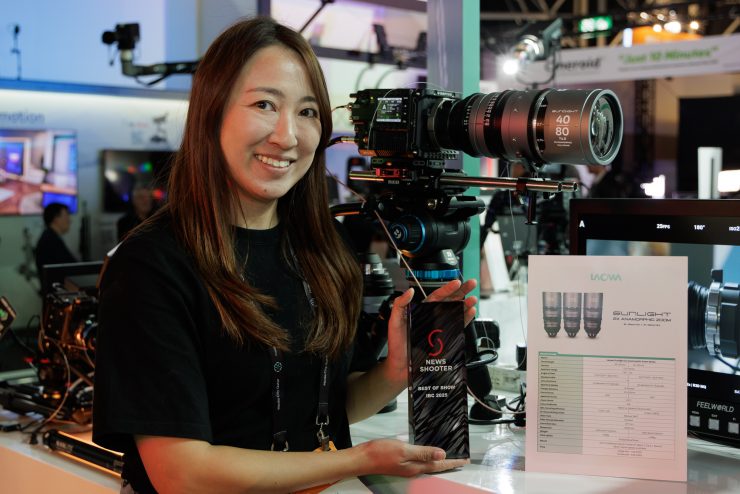
Laowa’s new Sunlight 2x FF Anamorphic Zoom Series are claimed to bring a new level of versatility and accessibility to full-frame anamorphic filmmaking. They are also claimed to be the World’s first front anamorphic full frame 2x anamorphic zooms.
The lenses come in PL mount by default; however, optional Canon RF/ Nikon Z/ Sony E / L mount bayonets are available for purchase on the website for easy adaptation to different camera systems.
The first two lenses in the new series are the 40-80mm T4.5 and the 70-135mm T4.5. Even though they are full-frame lenses, the 40-80mm T4.5 isn’t going to cover open gate on cameras like the ARRI Alexa Mini LF or Sony VENICE 2.
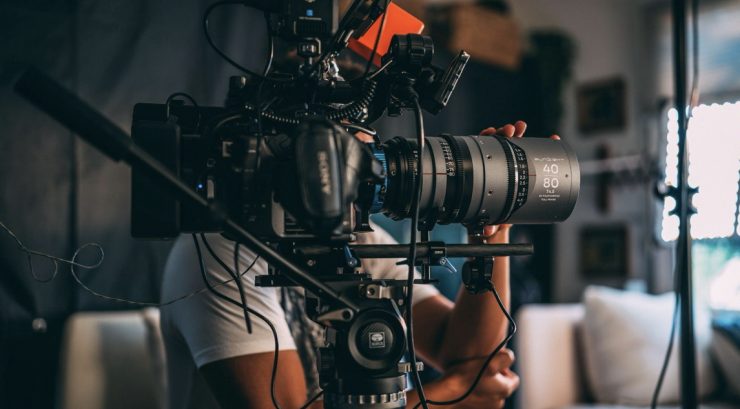
Following in the footsteps of the Laowa Proteus series, the Sunlight zooms are claimed to offer exceptional value and performance. The Laowa Sunlight Series achieves its distinct 2x anamorphic character through a sophisticated front anamorphic design, all while maintaining an impressively compact size and lightweight build.
The lenses weigh in at 2.8kg / 6.17 lb for the 40-80mm T4.5 and 2.6kg / 5.73 lb for the 70-135mm T4.5.
Key features
- Versatile Zoom Range
- Constant T4.5 Aperture
- Parfocal Design
- Expressive Anamorphic Look
- Constant 2x Squeeze
- 4 Cinematic Flare Options (Amber/Blue/Silver/Clear)
- Organic Focus Roll-off
- Dreamy Oval Bokeh
- Low Focus Breathing
- Close Minimum Focusing Distance
- Ergonomic & Intelligent Cine Housing
- Back Focus Adjustment Available
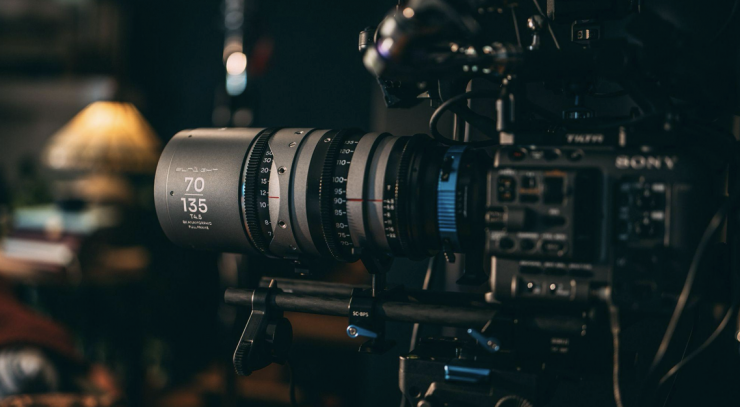
The constant T4.5 aperture across the zoom range ensures consistent brightness, eliminating light loss during zooms. This reliability supports uniform exposure, making it ideal for fast-paced shoots requiring seamless focal length adjustments. The T4.5 aperture also enables shooting in low-light environments.
The Laowa Sunlight Series features a carefully calibrated parfocal design, guaranteeing that focus remains consistent throughout the entire zoom range.
The Laowa Sunlight Series introduces what the company is referring to as organic focus roll-off. The smooth, gradual transitions from sharp focus to beautifully blurred areas create a natural shallow depth of field and distinct elliptical bokeh.
The Laowa Sunlight Series features good close-focus capabilities. With a minimum focusing distance of just 0.61m (40-80mm) or 0.78m (70-135mm).
The Laowa Sunlight 2x FF Anamorphic Zoom Series costs $5,999 USD for a single lens (40-80mm/70-135mm) and $10,999 USD for a 2-lens set. Interchangeable bayonets for mirrorless cameras (Canon RF, Sony E, Nikon Z, L mount) are available for purchase, priced at $50 USD each.
OSEE Mega 22S4 21.5″ IPS 10 Bit Monitor
OSEE showed their new 21.5″ tri-input monitor at IBC 2025. The monitor is capable of receiving three inputs from either SDI or HDMI and displaying them simultaneously on the screen. It also features one output with HDMI and SDI. This is very handy for using a wireless system to send to a client monitor.
The monitor is 10-bit full HD but can handle 4K single via HDMI, which will be downconverted. The SDI signal is 3G/SDI. This is a significant advantage over the earlier version by OSSE, such as the MEGAMON 15, which lacked 4K downconversion. This is a welcome upgrade.
OSEE Mega 22S4 21.5″ Specifications
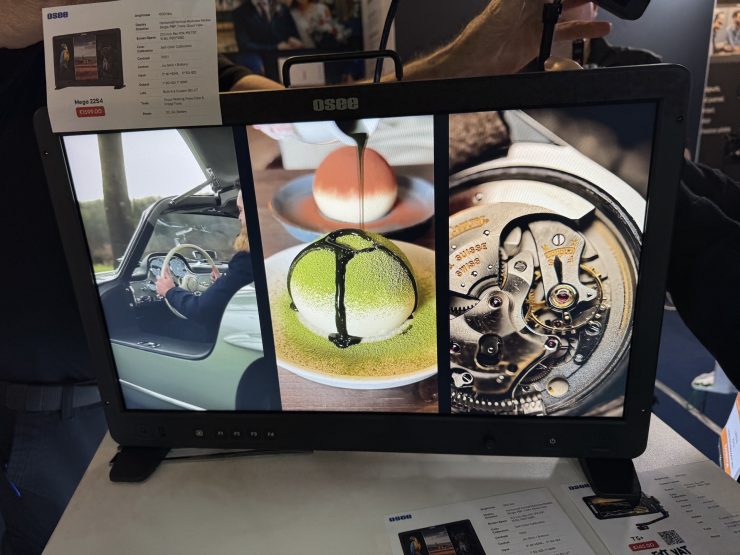
| Brightness | 1500 Nits |
| Display Direction | Horizontal/Vertical Multiview Modes: Single, PBP. Triple, Quad View |
| Screen Specs | 21.5 inch. Rec.709, IPS 178°, 10 Bit, 1920*1080 |
| Color Calibration | Self-Color Calibration |
| Contrast | 1100:1 |
| Control | Joy Stick + Buttons |
| Input | 3* 4K-HDMI, 3* 3G-SDI |
| Output | 1* 3G-SDI, 1* HDMI |
| Luts | Built-In & Custom 3D LUT |
| Tools | Focus Peaking, False Color & Image Tools |
| Power | DC, AC, Battery |
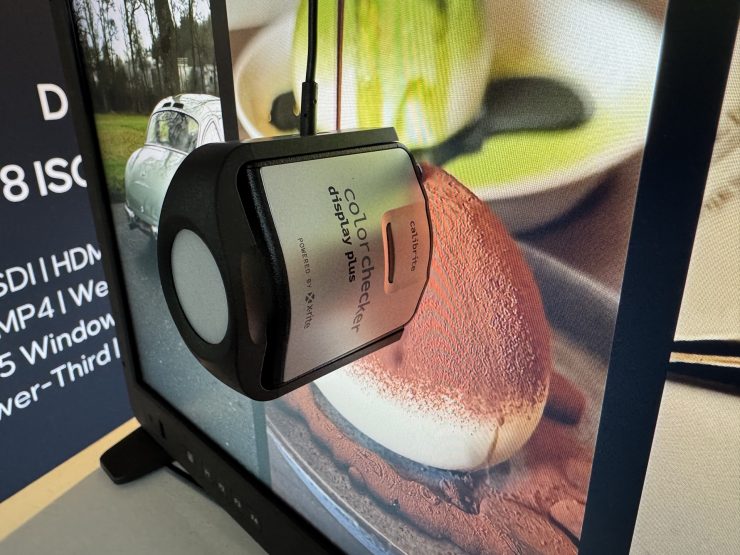
The monitor can be calibrated without the use of a PC by using an X-Rite Color Checker display and calibration probe, which attaches via USB. This is a great feature.
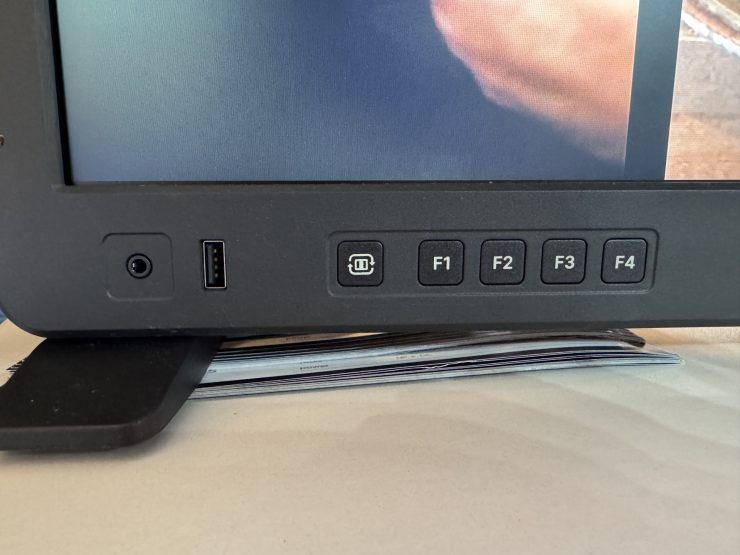
Firmware updates are installed via the front USB input, and a headphone jack is available next to it.
OSEE did a nice job adding a VESA mount that can be used in both vertical and horizontal modes. It disconnects and locks quickly to reorient the monitor.
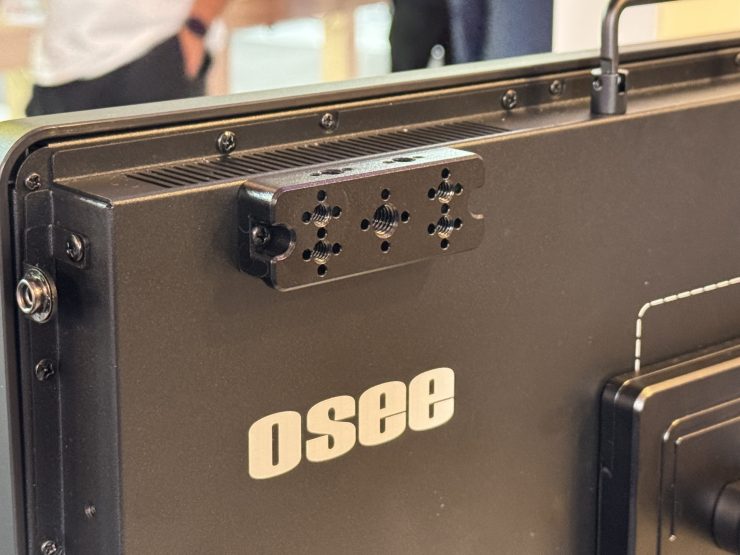
Cheese plates are available to add devices such as wireless transmitters that can connect via the SDI or HDMI output ports.
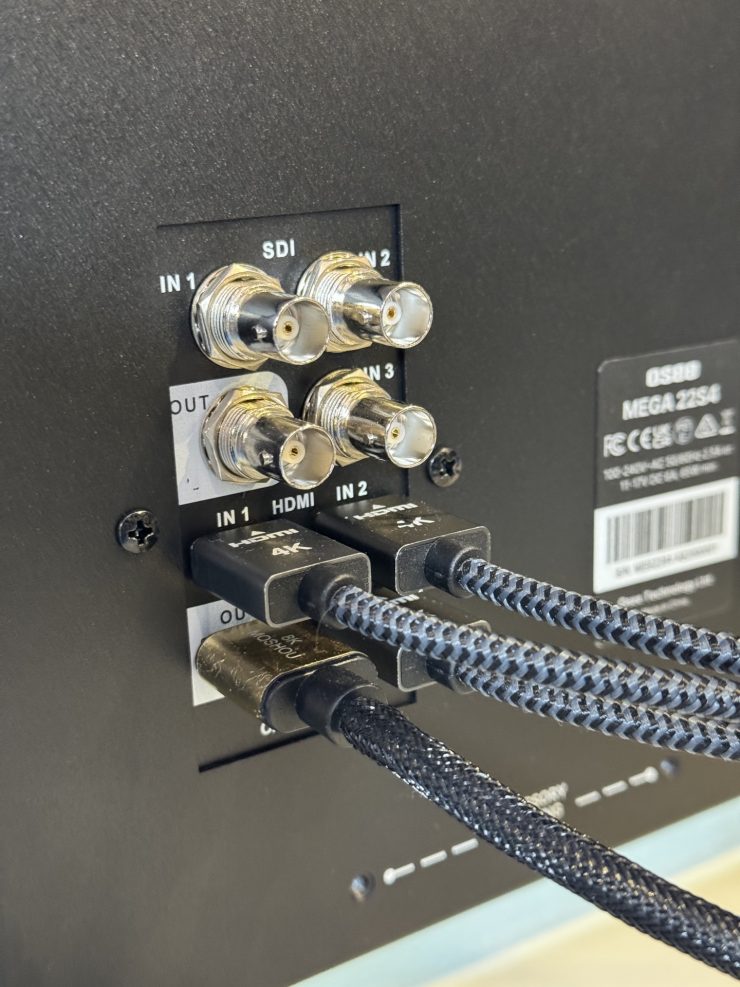
Three HDMI and SDI ports are available. You can switch between the three inputs or have three up at the same time with cropping.
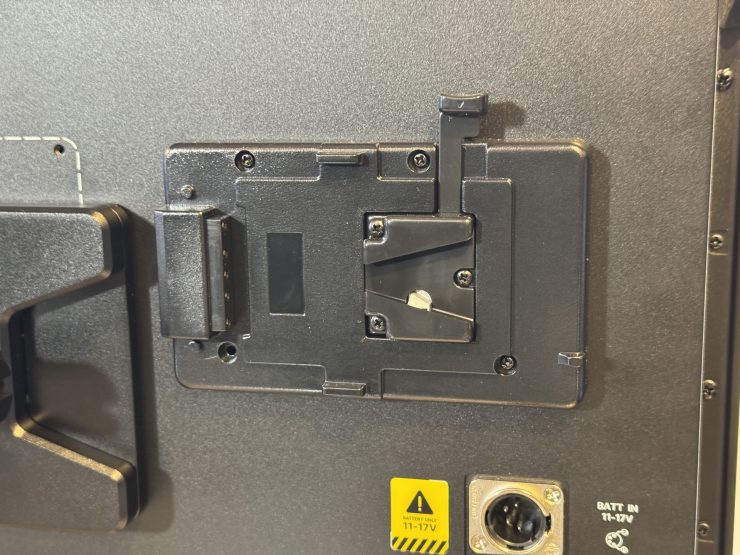
OSEE includes both V-Mount and Gold Mount battery plates for easy switching, depending on the batteries you want to use. I like this a lot, as I do have both types, and it’s great to have options.
Instead of including a case, the monitor ships with a foam insert that is compatible with a Pelican 1600.
The Mega 22S4 retails for €1599 and will be available in the fourth quarter of 2025.
